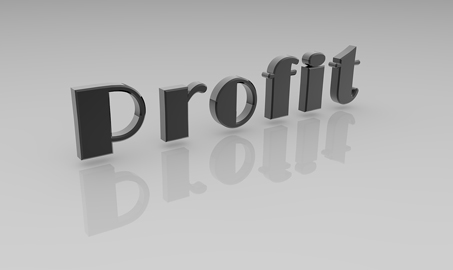 The profitability ratio is one of the most important metrics for any small business owner and can help you to avoid insolvency. At a glance, it can give you real insight into your company’s financial health – yet many entrepreneurs regard the calculation as overly complex. It doesn’t have to be.
The profitability ratio is one of the most important metrics for any small business owner and can help you to avoid insolvency. At a glance, it can give you real insight into your company’s financial health – yet many entrepreneurs regard the calculation as overly complex. It doesn’t have to be.
For example, one might assume that a company turning over a million pounds is doing far better than one with a turnover of £100,000. Yet it’s far from uncommon to find that the smaller business is more profitable. By using percentages, profitability ratios allow entrepreneurs to compare businesses of different scales. In this way, a small business owner who believes he is making little headway might actually discover that he is one of the top financial performers in his industry. Similarly, gauging your business against industry benchmarks can significantly alter your attitude towards growth and investment.
But what exactly is a profitability ratio?
Calculating your profitability ratio
In fact, there are three different types of profitability ratio.
The ratio for gross profit margin tells you what percentage of your income is yours to spend. The equation is as follows:
((Total sales – Cost of goods sold or production costs) / Total sales)) x 100 = gross profit margin.
Or put another way, simply take the gross profit figure from your profit and loss statement and divide it by your total income. Multiply the figure by 100 and you have your gross profit margin as a percentage. This will help you analyse whether your prices are too high or too low, and will help you identify top-performing business units or product lines – enabling you to focus on those areas that really bring home the bacon.
Meanwhile, the operating margin tells you what percentage of your income remains after you have paid your operating expenses. “Operating expenses” cover all the costs of doing business, from rent and business rates to salaries and professional fees, but does not include tax or non-operating costs. The equation is similar to that for gross profit margin:
((Total sales – Cost of goods sold – Operating expenses)/ Total sales)) x 100 = Operating margin.
Again, this can be done more simply by dividing the net operating income from your profit and loss statement by your total income and multiplying the result by 100.
Finally, your net profit margin tells you what percentage of income remains after the deduction of all expenses: operating expenses, taxes, finance costs and so on. These expenses should not include the acquisition of assets or owners’ remuneration. The equation is rather simpler:
(Net profit / Total sales) x 100 = Profit margin.
What the figures really mean
Profitability ratios deliver insights into your business that cannot be gleaned from a profit and loss statement alone. It’s all too easy to read the latter document and assume that all is well as both gross and net income are rising, but if you’re not making profits then your business is heading into trouble. That trouble, if unchecked, could lead you towards insolvency.
Whilst we hope that understanding your profitability ratios will keep your business in the black, Cashsolv are experts in insolvency should things go wrong. In particular, we have huge experience of implementing Company Voluntary Arrangements (CVAs), which can help insolvent businesses avoid liquidation or administration. With a CVA, you would remain in control of your business whilst its debts are restructured, which usually involves creditors agreeing to receive some portion of what they are owed. Over the years, we have enabled countless companies to remain in business in this way – many of which have gone on to enjoy significant profitability and growth.

